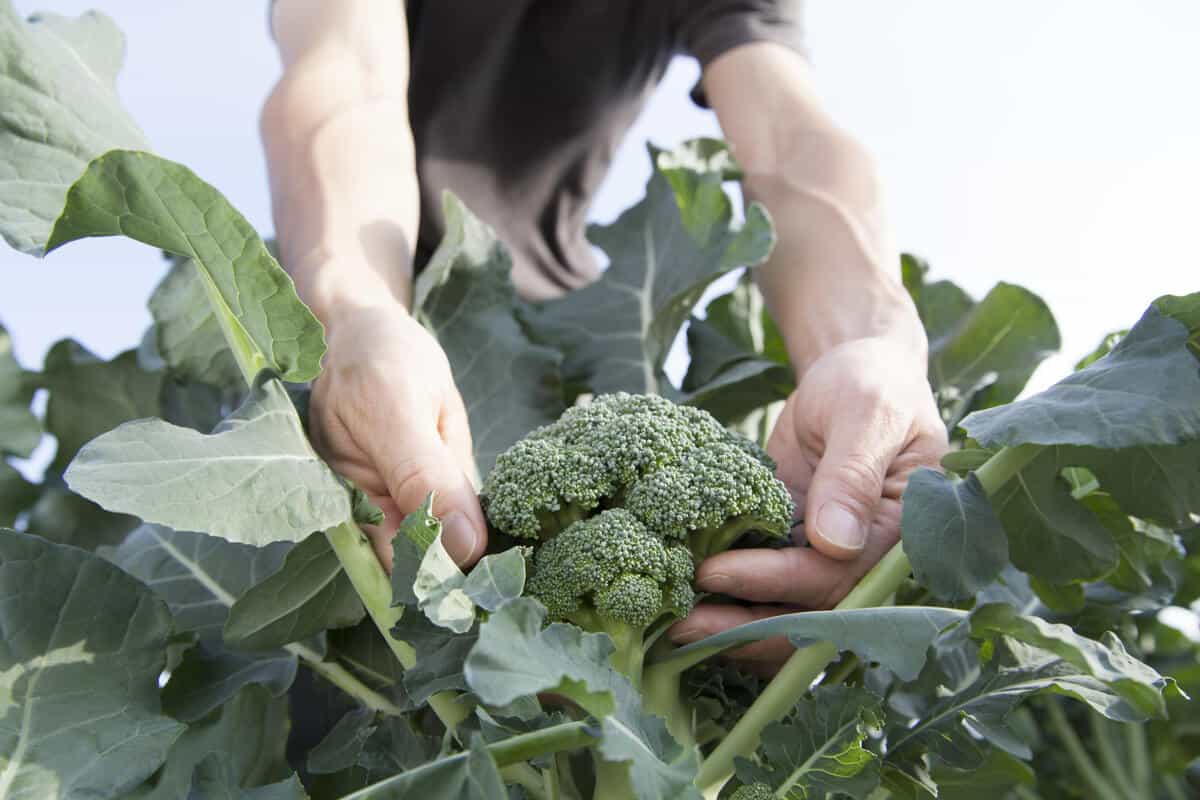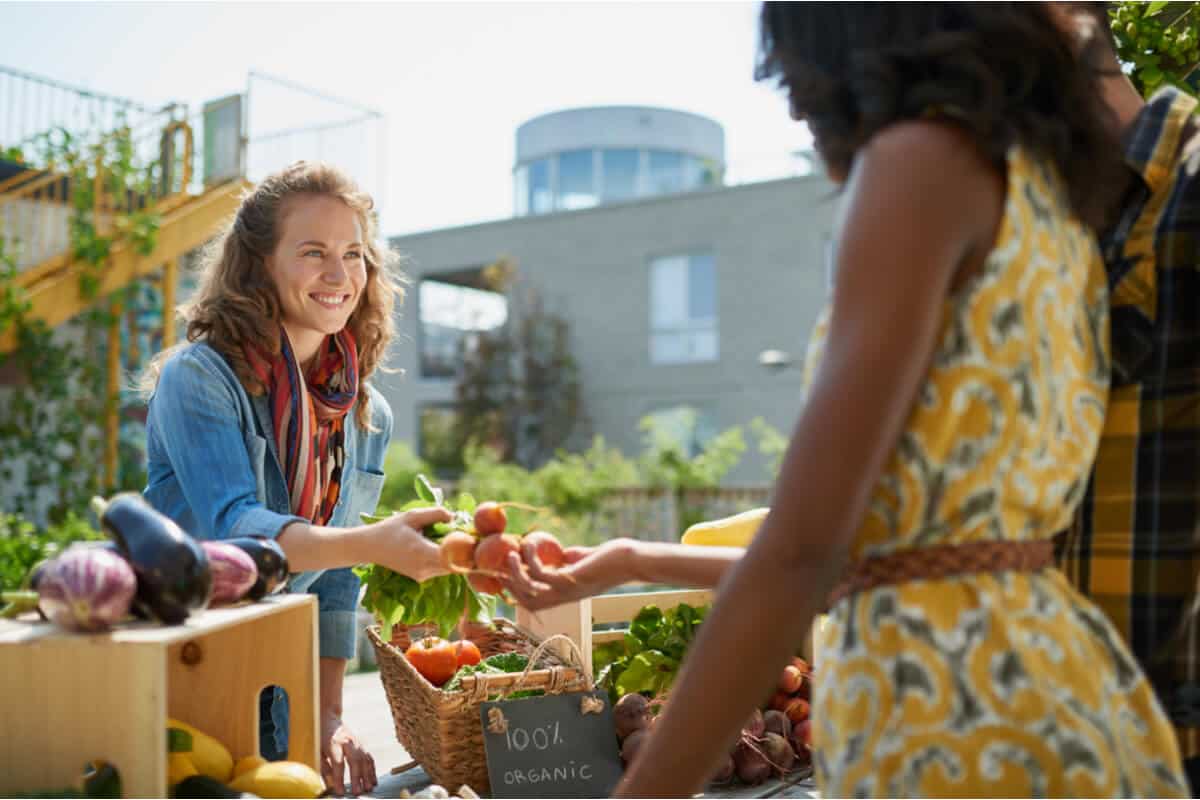
Seasonal produce not only tastes great and is packed with nutrition, but it also helps to reduce your carbon footprint while fostering a connection to your local community.
What is eating seasonally?
The Department for Environment, Food and Rural Affairs (DEFRA) defines seasonal food as “food that is outdoor-grown or produced during the natural growing/production period for the country or region where it is produced. It need not necessarily be consumed locally to where it is produced.” (13) Ayurveda, a tradhttp://randd.defra.gov.uk/Default.aspx?Module=More&Location=None&ProjectID=16390itional system of medicine that originated in India, supports eating with the seasons as an essential component to health and disease prevention. This concept is known as ritucharya. (12) According to Ayurvedic principles, diet should vary as the seasons change, allowing the body to get the specific nutrients it needs to thrive in a changing climate. With today’s long-distance food transportation systems, it’s easy to forget that the foods we have readily available are not always the ones that are in season. For anyone who has ever eaten a local peach at its prime, it’s hard to ignore the fact that in-season produce is a treat for the taste buds.5 benefits of eating seasonal produce
Eating with the seasons comes with a host of benefits. Not only does seasonal produce taste better, but it’s more nutritionally dense. (16) It also reduces your carbon footprint, leaves a little extra money in your wallet, and helps you form a connection with your local community. (6)Increases nutrient density
Factors such as the quality of soil, amount of sunlight, and climate contribute to the nutrient composition of foods. One study that examined vitamin C content in broccoli found that broccoli grown in-season during the fall had twice as much vitamin C as broccoli that was grown out of season in the spring. (16) Interestingly, while the study set out to determine the nutritional differences between organic versus conventionally-grown produce, it concluded that the growing season seems to have the largest impact on vitamin C content. (16)
Broccoli grown in-season has twice as much vitamin C as broccoli grown out of season.
Improves taste and quality
Most people will agree that nothing tastes better than fresh strawberries in the spring and early summer and that most fruits and vegetables have the best flavor when purchased from the local farmers’ market. With the global demand for fresh produce on the rise, many producers have had to turn to post-harvest treatments to control ripening, spoilage, and quality during transportation, which oftentimes can mean a decrease in quality through the use of heat, irradiation, and edible coatings. (9)(11) For example, as one of the most consumed crops in the world, bananas have been shown to be significantly affected by ripening agents in terms of quality such as color, texture, and flavor. (8)Reduces your carbon footprint
Having access to year-round produce has its benefits, especially in colder climates occurring in northern regions of the United States and Canada. This expansion of the global food market has been beneficial for increasing international trade, sharing cultural foods, and providing low- and middle-income countries with food. (6) However, the global demand for food has undoubtedly come with a major environmental impact, as food now travels farther than it ever has, collectively leaving a large carbon footprint. (2)(3) Around one-third of the vegetables and more than half of the fruit purchased in the United States are imported from other countries. (4) Tim Lang, professor of Food Policy at City University London’s Centre for Food Policy, coined the term food miles to describe this phenomenon and increase awareness of food consumerism and its environmental impact. (5) The distance that our food has to travel isn’t the only important part of the environmental equation; growing methods also play a role. Studies have gone as far as to show that out-of-season foods grown in greenhouses in the United Kingdom require greater energy consumption than the same product grown elsewhere in-season then imported. (15) Buying with the seasons and locally from a farmers’ market or through a community-supported agriculture (CSA) program can help reduce the distance from farm to plate as well as our carbon footprint. (6)Improves affordability
It is no surprise that eating seasonally and locally is easier on your wallet. We know how expensive it is to purchase strawberries from the grocery store compared to the farmers’ market stand. When fruits and vegetables are in season, there is more supply available, resulting in lower prices. (7)Creates a connection with the community
Choosing seasonal produce means not only supporting local agriculture, but it also gives you the opportunity to connect with the people growing food in your local community. Looking around farmers’ markets, connections are everywhere you look. Why is maintaining a connection with your community important? Studies show that social connectedness can promote longevity. In fact, research conducted on the world’s Blue Zones, areas around the world with the largest population of people who live 100 years or more, indicates that community is one of the threads that unite the centenarians together. (1)(17) Visiting your local farmers’ market may also encourage you to eat more fruits and vegetables. One study of households in rural communities demonstrated that fruit and vegetable consumption is highest among individuals who regularly visit farmers’ markets. (10)What’s in season?
Given the many benefits of consuming a more seasonally-focused diet, it makes sense to incorporate seasonal foods into your diet. This leads us to a very important question: what produce is in season now? The following fruits and vegetables are available seasonal all year long.
Eat a variety of fruits and vegetables year-round.
Tips for eating seasonally
From shopping at your local market to experimenting with growing your own fruits and vegetables at home, there are lots of ways to nourish yourself with the benefits of seasonal produce.- Shop at farmers’ markets or purchase a membership with your local CSA to source seasonal produce and support your community.
- Try growing your own fruits and vegetables at home with an indoor herb garden, urban balcony garden, or outdoor vegetable garden boxes.
- Freeze, dehydrate, or can fresh produce when it is in season.
- Buy frozen fruits and vegetables during the winter since they are often less expensive and picked at their nutrient-dense peak.
- Try fermenting and pickling seasonal vegetables to preserve their nutritional value.

Farmers’ markets and a membership with your local CSA are great ways to source seasonal produce and support your community at the same time.
The bottom line
The ancient concept of ritucharya in Ayurveda reminds us how important it is to eat with the seasons while deepening our connection with the environment around us. Eating seasonally significantly improves flavor–you only have to compare those local, ripe strawberries or those plump, juicy nectarines with their out-of-season, imported counterparts to be convinced. Local produce is also more nutritious than that from out-of-season crops, is a great way to reduce your carbon footprint, saves you money, and cultivates a connection to agriculture in our local communities. The rewards of seasonal eating are truly bountiful.Help more patients.
right in your Fullscript account!
New to Fullscript? Sign up now.
- Buettner, D., & Skemp, S. (2016). Blue zones. American Journal of Lifestyle Medicine, 10(5), 318–321.
- Hammond, S., Brown, J., Burger, J., Flanagan, T., Fristoe, T., Mercado-Silva, N., Nekola, J., & Okie, J. (2015). Food spoilage, storage, and transport: Implications for a sustainable future. BioScience, 65(8), 758–768.
- Hospido, A., Milà i Canals, L., McLaren, S., Truninger, M., Edwards-Jones, G., & Clift, R. (2009). The role of seasonality in lettuce consumption: A case study of environmental and social aspects. The International Journal of Life Cycle Assessment, 14(5), 381–391.
- Johnson, R. (2016). The U.S. trade situation for fruit and vegetable products. Congressional Research Service.
- Lang, T. (2006). Food miles.
- Macdiarmid, J. I. (2013). Seasonality and dietary requirements: Will eating seasonal food contribute to health and environmental sustainability? Proceedings of the Nutrition Society, 73(3), 368–375.
- MacDonald, J. M. (2003). Demand, information, and competition: Why do food prices fall at seasonal demand peaks? The Journal of Industrial Economics, 48(1), 27–45.
- Maduwanthi, S., & Marapana, R. (2019). Induced ripening agents and their effect on fruit quality of banana. International Journal of Food Science, 2019, 1–8.
- Mahajan, P. V., Caleb, O. J., Singh, Z., Watkins, C. B., & Geyer, M. (2014). Postharvest treatments of fresh produce. Philosophical Transactions of the Royal Society A: Mathematical, Physical and Engineering Sciences, 372(2017).
- Pitts, S., Gustafson, A., Wu, Q., Mayo, M. L., Ward, R. K., McGuirt, J. T., Rafferty, A. P., … & Ammerman, A. S. (2014). Farmers’ market use is associated with fruit and vegetable consumption in diverse southern rural communities. Nutrition Journal, 13(1).
- Romanazzi, G., Feliziani, E., Baños, S. B., & Sivakumar, D. (2016). Shelf life extension of fresh fruit and vegetables by chitosan treatment. Critical Reviews in Food Science and Nutrition, 57(3), 579–601.
- Sarkar, P. K., Thakkar, J., & Chaudhari, S. (2011). Ritucharya: Answer to the lifestyle disorders. AYU (An International Quarterly Journal of Research in Ayurveda), 32(4), 466.
- U.K. Department for Environment Food and Rural Affairs. (2012). Understanding the environmental impacts of consuming foods that are produced locally in season.
- U.S. Department of Agriculture. (n.d.). Seasonal produce guide.
- Webb, J., Williams, A. G., Hope, E., Evans, D., & Moorhouse, E. (2013). Do foods imported into the UK have a greater environmental impact than the same foods produced within the UK? The International Journal of Life Cycle Assessment, 18(7), 1325–1343.
- Wunderlich, S. M., Feldman, C., Kane, S., & Hazhin, T. (2008). Nutritional quality of organic, conventional, and seasonally grown broccoli using vitamin C as a marker. International Journal of Food Sciences and Nutrition, 59(1), 34–45.
- Yang, Y. C., Boen, C., Gerken, K., Li, T., Schorpp, K., & Harris, K. M. (2016). Social relationships and physiological determinants of longevity across the human life span. Proceedings of the National Academy of Sciences, 113(3), 578–583.





